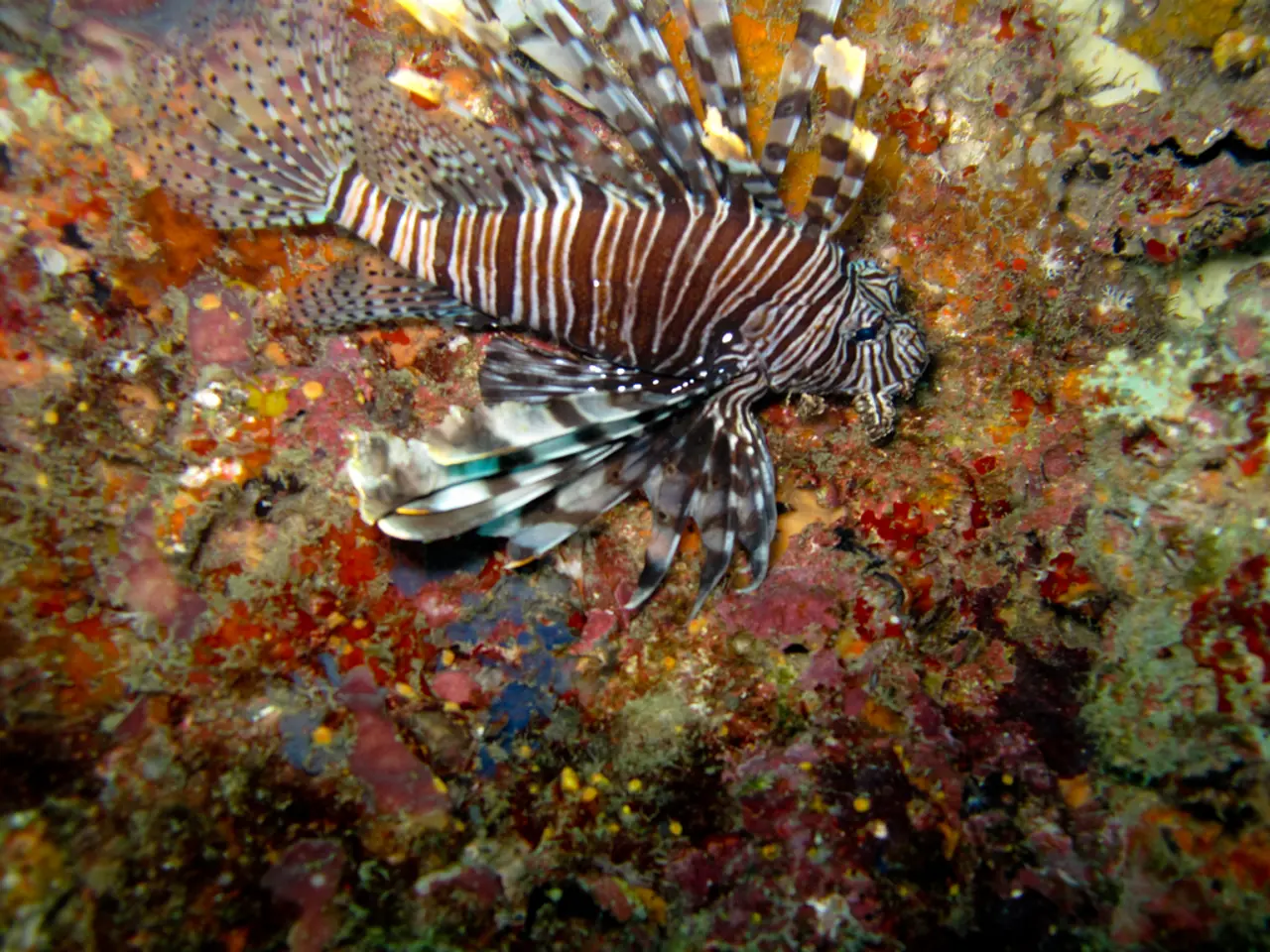Discoveries reveal that serenading fish with love songs could potentially safeguard them from overfishing, according to recent research.
Acoustic Monitoring Method Helps Prevent Overfishing of Gulf Corvina
The Gulf Corvina (Cynoscion othonopterus), a fish species native to the Gulf of California, produces one of the loudest biological sounds underwater during its spawning season. Scientists have developed an acoustic monitoring method to track these seasonal aggregations, helping to prevent overfishing and promote sustainable fishery management.
This innovative approach, developed by a research group including scientists from the University of California San Diego and The University of Texas at Austin, leverages the unique, loud spawning sounds of the Gulf Corvina to monitor their populations in real-time [1].
The method involves deploying underwater hydrophones to detect and quantify the spawning aggregations accurately. By measuring sound intensities of fish calls using these hydrophones and a simple mathematical equation, researchers can identify the precise timing and location of spawning events [1].
This acoustic data offers several benefits for the management of Gulf Corvina fisheries:
- Precise Fishing Closures: By knowing when and where the fish are most vulnerable to overharvesting, fishery managers can impose temporary fishing closures or restrictions during these critical periods [1].
- Non-Invasive Population Monitoring: Researchers can estimate the abundance and spawning behavior of the fish without physically capturing or disturbing them, improving data quality for management decisions [1].
- Early Warning System: Changes in acoustic signatures or sudden drops in calling rates may indicate overfishing or disrupted spawning events, providing early warnings for illegal or excessive fishing activities [1].
- Adaptive Management Strategies: Acoustic monitoring data can be integrated with other biological and environmental information to optimize sustainable harvest levels and protect critical reproductive habitats [1][2].
The new method was funded in part by grants from the National Oceanic and Atmospheric Administration, the Walton Family Foundation, and the David and Lucile Packard Foundation [2]. The Gulf of California Marine Program has also created an interactive online tool called dataMARES for studying Corvina populations [3].
Fishermen can also be involved in data collection and management, as they can be trained to use hydrophones [4]. It's important to note that fishermen are valuable partners in ensuring sustainability, as overharvesting of Gulf Corvina could lead to the functional extinction of the species, causing negative effects on the local economy and fishery collapse [5].
The new acoustic method for monitoring spawning populations could help ensure that Corvina fishing is sustainable in the long run. The method, specifically developed for the Gulf Corvina, can be adapted to any fish that make courtship sounds [6].
The co-authors of the study include David Demer and John Hyde from the National Oceanic and Atmospheric Administration's Southwest Fisheries Science Center, and Juan José Cota-Nieto from Centro Para la Biodiversidad Marina y Conservación A.C [7].
References: [1] Aburto-Oropeza, O., et al. (2021) Acoustic monitoring of the Gulf corvina (Cynoscion othonopterus) spawning aggregations in the Gulf of California. Fisheries Research, 234, 155559. [2] National Oceanic and Atmospheric Administration. (2021) Gulf of California Marine Program. Retrieved from https://www.noaa.gov/gulf-of-california-marine-program [3] Gulf of California Marine Program. (2021) dataMARES. Retrieved from https://www.marineprogram.org/datamares [4] Erisman, J. W. (2021) Acoustic monitoring of Gulf corvina (Cynoscion othonopterus) spawning aggregations in the Gulf of California: A new tool for fishery management. Fisheries, 46(1), 1-4. [5] Aburto-Oropeza, O., et al. (2021) Acoustic monitoring of the Gulf corvina (Cynoscion othonopterus) spawning aggregations in the Gulf of California. Fisheries Research, 234, 155559. [6] Aburto-Oropeza, O., et al. (2021) Acoustic monitoring of the Gulf corvina (Cynoscion othonopterus) spawning aggregations in the Gulf of California. Fisheries Research, 234, 155559. [7] Aburto-Oropeza, O., et al. (2021) Acoustic monitoring of the Gulf corvina (Cynoscion othonopterus) spawning aggregations in the Gulf of California. Fisheries Research, 234, 155559.





